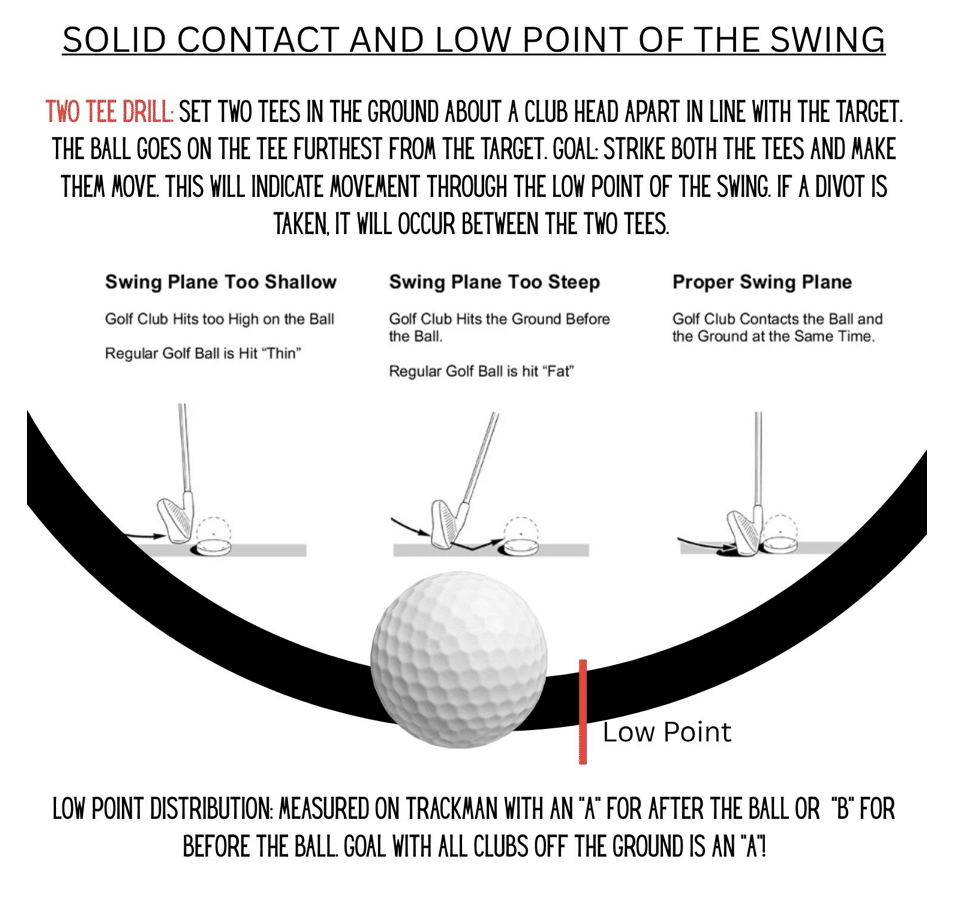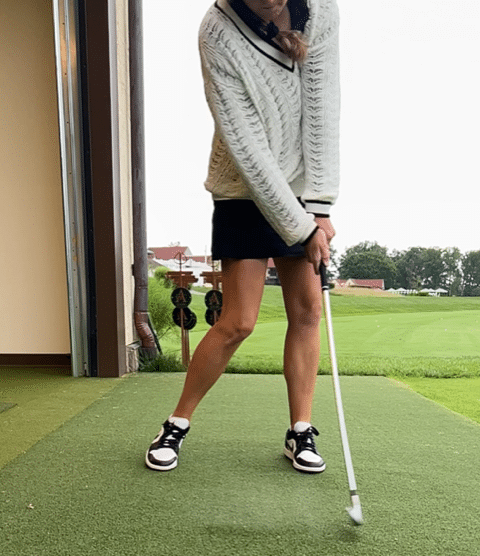By Tessa Teachman, PGA
One of the most common things I hear after a topped shot is: “I lifted my head on that one, right?”
While that’s a popular explanation, it’s often not the root cause. More often than not, the issue is that the clubhead is too far from the proper low point of the swing arc when it makes contact with the ball.
What is the Low Point?
Think of the golf swing as a circle. At some point during that circular motion, the club must make contact with the ground—this point is known as the low point. For solid contact with any club (excluding the driver), the low point should ideally occur after the ball. That’s when you brush the turf or take a divot—evidence that the ball was struck first, then the ground.
If the club bottoms out before reaching the ball, it starts to travel upward as it approaches impact. This leads to all kinds of mishits: topped shots, chunks, skulls or even whiffs. On the other hand, when the club reaches its lowest point after the ball, you compress the ball properly, producing that crisp, solid feel that results in a high, long and more accurate shot.
Why Does This Happen?
There are several common reasons the club bottoms out too early:
Loss of Body Rotation: If your body stops rotating during the downswing, your arms take over. This can lead to a steep, early release, often producing a chunked shot.
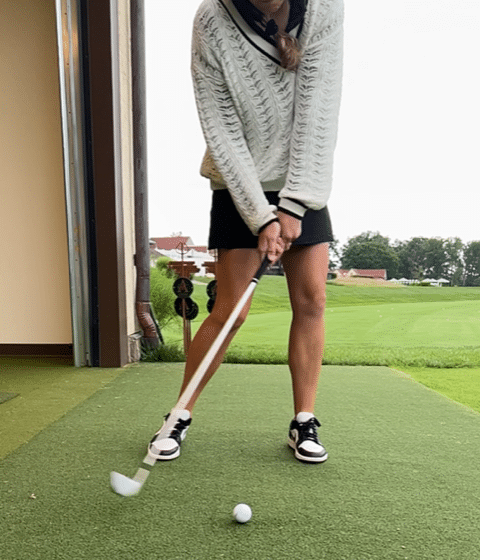 Elbow or Wrist Breakdown: Bending the elbows or flipping the wrists through impact adds length to the swing arc. This moves the clubhead further from your body and causes thin or topped shots.
Elbow or Wrist Breakdown: Bending the elbows or flipping the wrists through impact adds length to the swing arc. This moves the clubhead further from your body and causes thin or topped shots.
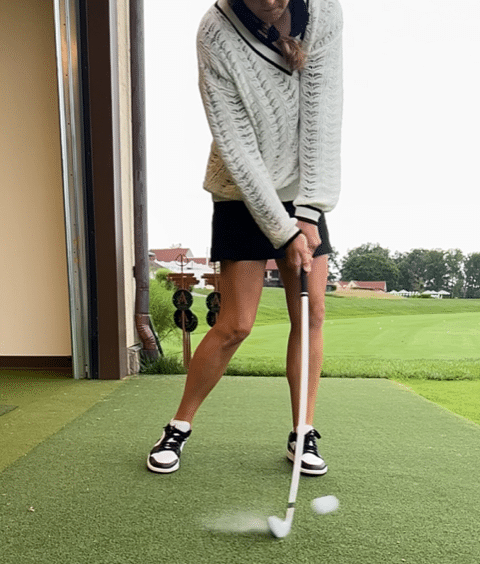 Changing Spine Angle: Standing up or collapsing your posture through impact causes the club to rise or drop accordingly. These changes often result in inconsistent low points and poor contact.
Changing Spine Angle: Standing up or collapsing your posture through impact causes the club to rise or drop accordingly. These changes often result in inconsistent low points and poor contact.
One of my go-to drills for improving low-point control is called the Two-Tee Drill. It is simple, effective and perfect for golfers of any level.
Here’s how to set it up:
- Place two tees in line with your target, roughly two inches apart.
- The trail tee (farthest from the target) represents the ball.
- The lead tee (closer to the target) is your secondary aiming point.
Make a swing intending to brush both tees with your clubhead. If done correctly, the club should contact the ground just after the trail tee, popping both tees out of the ground. This shows you’ve struck through the low point—after the ball—and made proper ground contact.
Pro Tip: The lower the tees are in the ground, the more challenging (and accurate) the feedback.
Once a player can consistently brush both tees three to five times in a row, I place a ball on the trail tee and ask them to maintain the same objective: brush the tees. The ball is now just in the way of a well-delivered clubhead.
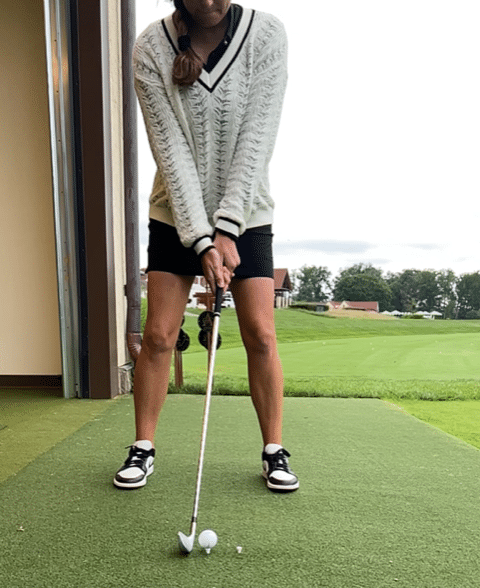
Next progression: Remove the trail tee, place the ball on the ground and keep the lead tee in place. Same goal.
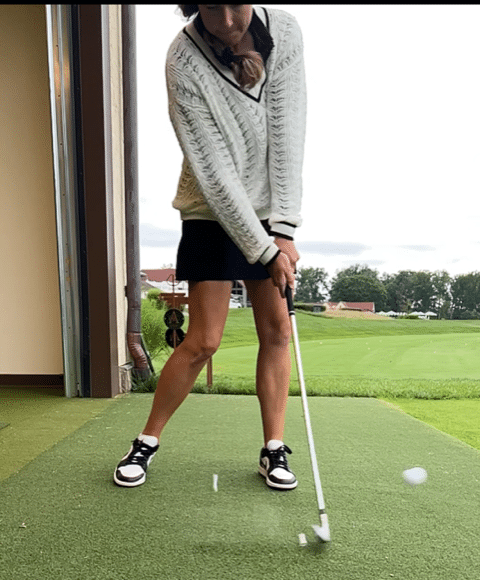
Final stage: Remove both tees. Pick a blade of grass just in front of the ball and swing through it. You’ve now trained yourself to control your low point instinctively.
This drill provides instant feedback without getting bogged down in mechanics. It’s one of my favorite tools in beginner clinics, private lessons and even with more advanced players.
Golf: A Game of Opposites
The Two-Tee Drill is also a great way to demonstrate the paradox of golf—to make the ball go up, you have to hit down. When you focus on striking the ground after the ball, you’ll start to see better ball flight and more consistent contact due to the compression of the ball. The grooves and center of mass of the clubhead strike the ball and the grooves will create spin and ultimately solid contact and height.
Using Tech to Reinforce the Concept
When available, I like to pair this drill with radar technology like Trackman, where we can measure Angle of Attack and Low Point Distance. These data points show exactly how the club is interacting with the ground and ball. If you don’t have access to a launch monitor, no problem. The tees are a fantastic and free way to train and track your club’s delivery.
Final Thoughts
Solid contact begins with understanding and controlling the low point of your swing. By training yourself to strike the ball first and then the turf, you’ll build a more reliable, consistent swing and enjoy that pure, compressed feel we’re all chasing. Try the Two-Tee Drill during your next practice session, and start mastering one of golf’s most fundamental principles.
 Tessa Teachman, the 2024 Philadelphia PGA Section Player Development Award winner, is a PGA of America Assistant Golf Professional at Aronimink Golf Club in Newtown Square, Pennsylvania. Tessa’s background includes a stellar career at LSU, a playing career on multiple tours around the world and more recently PGA Membership. She has a passion for helping others love, understand and feel comfortable around the game of golf.
Tessa Teachman, the 2024 Philadelphia PGA Section Player Development Award winner, is a PGA of America Assistant Golf Professional at Aronimink Golf Club in Newtown Square, Pennsylvania. Tessa’s background includes a stellar career at LSU, a playing career on multiple tours around the world and more recently PGA Membership. She has a passion for helping others love, understand and feel comfortable around the game of golf.

